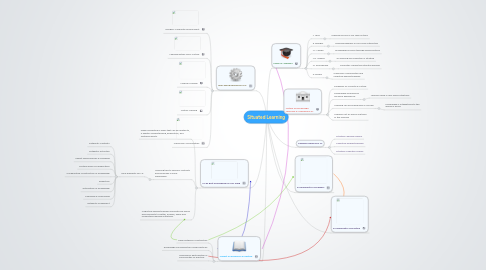Situated Learning
by Jeff Rodgers


1. Real-World Examples of SL
1.1. Google's Corporate environment
1.2. Learning within one's culture
1.3. Medical Training
1.4. Military Training
1.5. Classroom Communities
2. Impact on Research & Practice
2.1. New methods of Instruction
2.2. Knowledge conceived thru lived practices
2.3. Learning by participation in communities of practice
3. SL As Best Framework for LDT Field
3.1. When presented in ways that can be related to, A greater understanding, application, and synthesis exists.
3.2. Learning tied to specific contexts and purposes is more meaningful.
3.2.1. Nine Elements for LD
3.2.1.1. Authentic Contexts
3.2.1.2. Authentic Activities
3.2.1.3. Expert Performances & Modeling
3.2.1.4. Multiple Roles & Perspectives
3.2.1.5. Collaborative Construction of Knowledge
3.2.1.6. Reflection
3.2.1.7. Articulation of Knowledge
3.2.1.8. Coaching & Scaffolding
3.2.1.9. Authentic Assesment
3.3. Cognitive Apprenticeships simulate real-world environments to better, acquire, apply and understand learning situations.
4. Nature of Knowledge, Learning, & Teaching in SL
4.1. Emphasis on Society & Culture
4.2. Knowledge Acquired by Personal Experience
4.2.1. Learners work in real-world situations
4.3. Learning can be individually or socially
4.3.1. Knowledge is integrated into the learner's world
4.4. Teachers act as Senior Partners in the learning
5. Major SL Scholars
5.1. J. Lave
5.1.1. Learning occurs in our daily actions
5.2. E. Wenger
5.2.1. Learning happens in our social interaction
5.3. J.L. Lemke
5.3.1. Knowledge accrues through lived practices
5.4. J.G. Greeno
5.4.1. All learning and cognition is situated
5.5. M. Scardamalia
5.5.1. computer-supported intential learning
5.6. A. Brown
5.6.1. Classroom communities and cognitive apprenticeships
